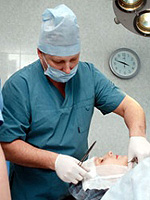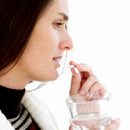Diseases transmitted in intimate proximity, also described Hippocrat. Since then, the list of these ailments was noticeably replenished, they were learned how to treat them and they began to speak openly. True, the last fact added to doctors a lot of hassle: Venusic diseases circled with many rumors and legends.
Content
This is not true. Most venereal diseases are transmitted with oral sexual contacts without a condom. However, it is worth noting that the risk of infection is lower than when sex contacts in the vagina.
Myth number 2. Sexual contacts with a married man (or married woman) are not conjugate with the risk of infection with venereal diseases.
Alas, in this case the risk of infection is not excluded. Indeed, often venereal diseases proceed asymptomatic (especially in women). At the same time, a person does not suspect the disease that could be infected many years ago.
Myth number 3. Sexual contacts with persons who periodically check for venereal diseases (employees of trade, food industries, children's institutions and T. D.) are not related to the risk of infection with venereal diseases.
It's hard to agree with this. First, such mass examinations include only a common smear and serological reactions to syphilis. In this case, you can easily skip a number of venereal diseases (chlamydia, mycoplasmosis, ureaplasmosis, viral infections), which can proceed unchanged in the overall smear. Secondly, such surveys are often conducted formally or «Virtually».
Myth number 4. Many venereal diseases can be infected in swimming pools or when using a shared bathroom.
This is wrong. The causative agents of venereal diseases are very unstable in the external environment. But may remain viable on a wet towel or washcloth for several hours. If you follow the elementary hygiene rules, that is, not to wear other people's things (including earrings), do not join someone else's cigarette, do not use someone else's lipstick, not to brush your teeth to someone else's brush and so on, it is impossible to infect.
In addition, single microorganisms are usually not able to cause disease. For infection, it is necessary to make a much larger number of microorganisms that can only get into the body only during sexual contact.
Cases of household infection rarely, but still meet. For example, rash on the body of the Great Son, which mother tried to bring out, lubricating the green, turned out to be a manifestation of secondary syphilis. Three weeks later, a woman had a wound on his finger, which the doctor classified as primary syphilis.
Doctors - surgeons, dentists and gynecologists can be dangerous to professional infection. They are in contact with the medium in which there may be pathogens of microorganisms, and the gloves sometimes rush.
Myth number 5. Drying immediately after sexual contact can significantly reduce the risk of infection with venereal diseases in women.
According to modern ideas, dying does not reduce the risk of infection with venereal diseases. Moreover, it contributes to the promotion of pathogens to the upper departments of female genital organs, contributing to the development of complications (inflammation of the uterus and appendages of the uterus). It should be noted that the dysfunction serves as a factor in the risk of Gardnerellize.
Myth number 6. Urination and kneading of the genital organs immediately after sexual contact can reduce the risk of infection with venereal diseases in men.
The risk of infection is possible somewhat will decrease, but as far as is unknown. Harm from such preventive measures will not be. However, it is not worth relying on their effectiveness.
Myth number 7. Prevention with chlorhexidine is a reliable method.
No, this is a very unreliable method. He does not give any guarantees. In addition, in women, chlorhexidine dysfunction contributes to the development of vaginal dysbiosis - the so-called Gardnernellosis.
Myth number 8. In the condom there are holes capable of passing HIV and causative agents of venereal diseases.
This is wrong. Modern scientific research convincingly show that latex condoms are reliably protected from HIV and causative agents of venereal diseases. Provided that the condom has a quality certificate, rightly selected (this applies to male condoms, because they are of different sizes) and is properly used. Woman can reduce the likelihood of infection using candles, cream, tablets. True, her partner will not protect these funds.
 Myth number 9. If a man breaks down a gonoron several times, he will become an impotent.
Myth number 9. If a man breaks down a gonoron several times, he will become an impotent.
If you treat the disease immediately and correctly, it will not affect male potency. If not, the gonococci is made up to the urinary tract and can cause both infertility, and impotence, and other diseases.
Myth number 10. The method of diagnostics appeared, allowing all the disease to determine all diseases.
One of the methods of modern diagnostics is a polymerase chain reaction (PCR) - really allows you to reveal «culprit» diseases, including venereal. But this method has its own nuances. If, for example, a person hurt chlamydia, then for some time in his body can remain «traces» of this ailment. Therefore, choose which analysis to do (and there are many - bacteriological, bacterioscopic, serological, culture), only a doctor should.
Myth number 11. There are antibiotics, allowing you to cure any infection in just three days.
Universal tablet from all diseases no. For example, syphilis is best to treat with the help of penicillin-rows, chlamydia - tetracycline. Moreover, special rigid schemes are used only in the treatment of syphilis and gonorrhea. With other diseases, the doctor in each case chooses medicines and adjusts their reception.
«Independence» In the treatment of venereal diseases, it is categorically contraindicated. After all, using one drug at the same ailment, you can get a completely different result that depends... from the acidity of the stomach, for example. In addition, venereal diseases are rarely found alone.
Most often «in company» Gonorrhea has to treat trichomoniasis or chlamydia, and sometimes far from the dermatovenerology of the disease, for example, viral hepatitis, which is transmitted in intimate proximity. Having cured one of them by the drug recommended by a neighbor or a medical director, you can develop a persistent immunity to this medicine in other microorganisms.
And do not ignore the recommendations for drug reception. Do you know that alcohol even in small quantities (beer, rum-cola) interacts with an antibiotic as an acid alkali? An ordinary neutralization reaction occurs!










